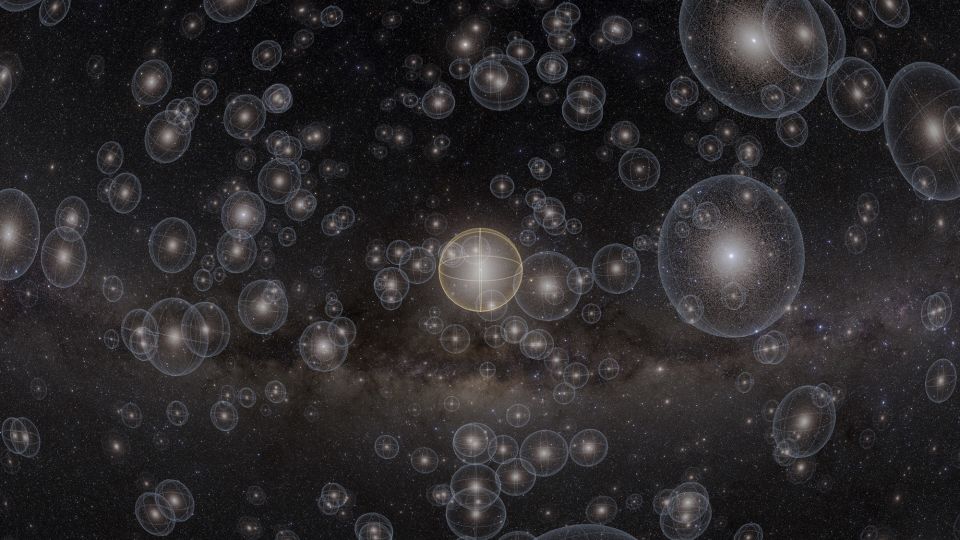
An unexpected discovery during the preproduction of a planetarium show may significantly alter scientific understanding of the Oort Cloud, one of the most enigmatic structures in our solar system. This revelation emerged as curators prepared for the debut of “Encounters in the Milky Way” at the Hayden Planetarium in New York City, where a projection unexpectedly revealed a spiral within the Oort Cloud.
The Oort Cloud, a vast expanse of icy bodies orbiting the sun at a distance 1,000 times greater than Neptune, has long been considered spherical. However, this new finding suggests a spiral structure, challenging previous conceptions. Jackie Faherty, an astrophysicist at the American Museum of Natural History, expressed her surprise upon witnessing the spiral during a scene test. “We hit play on the scene, and immediately we saw it. It was just there,” she recalled.
Unveiling the Spiral
To delve deeper into this phenomenon, Faherty consulted David Nesvorny, an Oort Cloud expert from the Southwest Research Institute. Initially suspecting data visualization artifacts, Nesvorny confirmed the spiral’s presence after reviewing his data. He subsequently published a scientific paper in The Astrophysical Journal, acknowledging the unusual discovery. “Weird way to discover things,” he noted, emphasizing the unexpected nature of the finding.
“We didn’t create it — David did. This is David’s simulation, and it’s grounded in physics. It has a totally good physical explanation for why it should be there.” – Jackie Faherty
The Oort Cloud: A Historical Perspective
The concept of the Oort Cloud dates back to 1950, proposed by Dutch astronomer Jan Oort. He envisioned it as a shell of icy bodies circling the sun from as far as 1.5 light-years away. This distant region is composed of remnants from the solar system’s formation, scattered by planetary interactions. Despite its theoretical existence, the Oort Cloud has never been directly observed, posing a challenge for astronomers.
Many of the icy bodies within the Oort Cloud travel at various inclinations, leading to its depiction as a sphere. Occasionally, these bodies are flung toward the sun, becoming comets with tails formed by vaporizing material. “Every now and again, some of these icy bodies come into the inner solar system, and we can see the orbit that they’re on,” Faherty explained.
Visualizing the Invisible
The spiral structure was initially overlooked due to the lack of three-dimensional visualization in Nesvorny’s data. Once visualized in Cartesian coordinates, the spiral became apparent. To validate the findings, Nesvorny utilized NASA’s Pleiades Supercomputer for extensive simulations, all of which confirmed the spiral’s existence.
“I thought, maybe just this particular simulation is showing it, and all the other simulations with other stellar encounters, other parameters, will not show it. But all the simulations, all the models I have, show the spiral.” – David Nesvorny
The spiral is attributed to the galactic tide, a gravitational field exerted by the galaxy’s stars and dark matter, affecting the Oort Cloud’s small bodies and comets. This force twists their orbital planes, creating the spiral formation observed in the inner Oort Cloud.
Challenges and Future Prospects
Despite this breakthrough, observing the Oort Cloud remains a formidable challenge. The Vera C. Rubin Observatory in Chile, with its powerful telescopic capabilities, may assist by discovering individual icy bodies. However, Nesvorny cautions that the telescope might only identify dozens of these bodies, insufficient for a comprehensive visualization of the spiral.
Faherty highlights the significance of understanding the Oort Cloud’s shape for theories on solar system evolution. “Maybe comets helped deliver water to Earth. Maybe the building blocks of life could be out there in the Oort Cloud,” she noted, emphasizing the importance of this research.
“This result reshapes our mental image of our home solar system, while also providing a new sense for what extrasolar systems’ Oort clouds may look like.” – Malena Rice, Yale University
While the discovery is theoretically compelling, its practical verification remains uncertain. Edward Gomez of Cardiff University points out the difficulty in testing the spiral theory due to the limited number of known Oort Cloud objects. Simon Portegies Zwart of Leiden University echoes this sentiment, noting the challenges in observing the spiral in the foreseeable future.
As scientists continue to explore the Oort Cloud, this accidental discovery serves as a reminder of the unexpected ways in which our understanding of the universe can evolve. With advancements in observational technology, the mysteries of the Oort Cloud may eventually be unraveled, offering new insights into the dynamics of our solar system.







